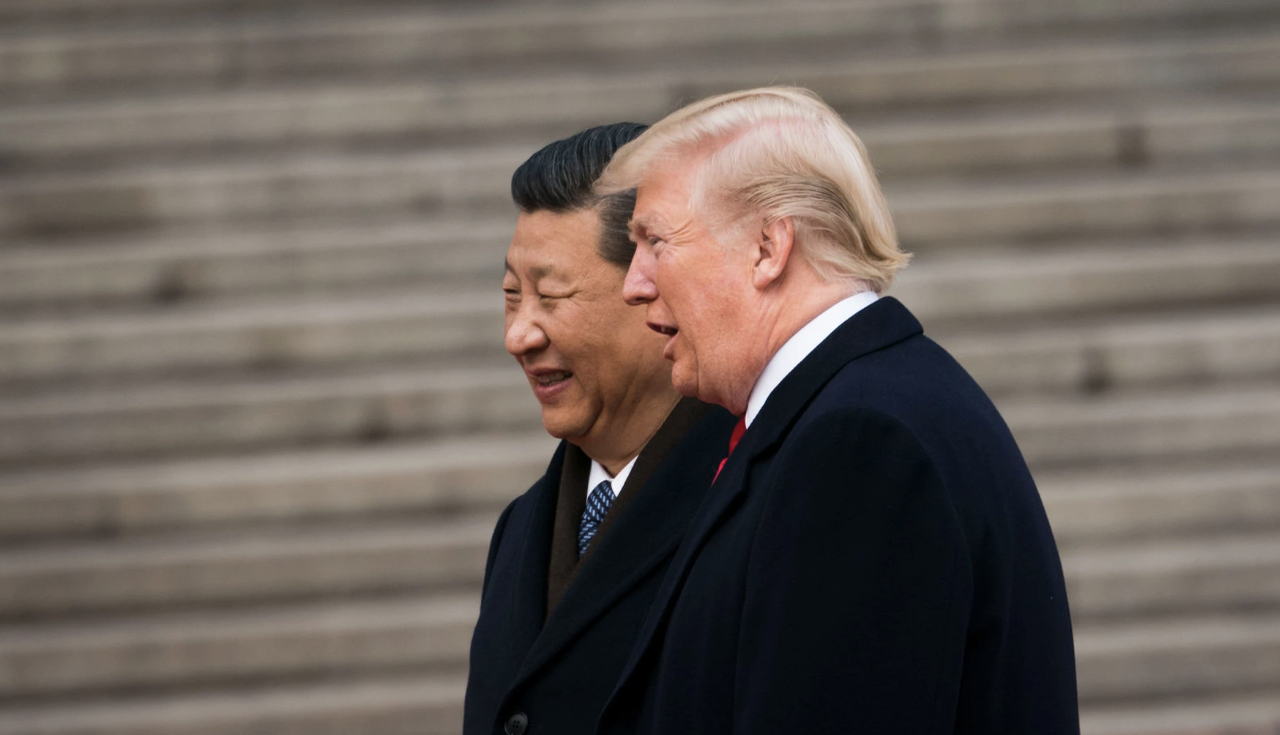When Beijing wants to send a message to its people, it has a number of state-controlled media outlets to choose from. If it wants that message to penetrate in the West, it can always leak it to a semi-connected English-language outlet like the South China Morning Post, which could add a dash of credibility.
But when it’s hoping to send a shot across President Trump’s bow, there’s no better venue than an anonymous leak to a “credible” US news organization like, say, the New York Times.
On Thursday, the Chinese appeared to choose option No. 3. After days of vague-yet-sunny trade headlines sourced to Chinese and US officials, the New York Times on Thursday published a story that the market had apparently already anticipated: After more than three months of talks, Chinese officials are beginning to get cold feet.
While the broad-strokes agreement sketched out last month largely spares China from uncomfortable structural changes to its economy, Chinese officials are reportedly worried that President Trump’s propensity for last-minute changes, as well as US demands that China is unwilling to meet – like demands on enforcement and a schedule for US tariff removal – might make a final deal untenable. And without a clear understanding of the final agreement, Beijing will likely remain wary of sending its president all the way to Florida just for a piece of chocolate cake.
The two sides in recent weeks agreed to the broad outlines of an agreement that would roll back tariffs in both countries, with China buying more American goods and opening up some markets to foreign goods. The trade deal looks like a good one for Beijing, since it largely spares the government from making substantive changes to its economy.
But some of the biggest details — like the enforcement mechanism to ensure China complies and the timing for the removal of tariffs — still haven’t been hammered out. Beijing officials are wary that the final terms may be less favorable, especially given Mr. Trump’s propensity for last-minute changes, according to two people familiar with China’s position.
“The work team is still continuing to negotiate because we still have a lot to do,” said Commerce Minister Zhong Shan, speaking on the sidelines of the 11-day annual session of the National People’s Congress, which began on Tuesday. At the legislative meeting, senior Chinese officials have been taking turns warning that challenges remain.
If Xi is going to travel to Mar-a-Lago, a deal needs to be effectively finished.
“If they’re going to send their president all the way to Florida, they have to know there’s an agreement in the end,” said James Green, who until last August was the top trade official at the United States Embassy in Beijing and is now a fellow at Georgetown University.
The Chinese have good reason to be concerned. After all, they’ve been burned before.
Over the past two years, Chinese negotiators have also repeatedly believed they had a deal, only for it to come apart at the last minute. Commerce Secretary Wilbur Ross in the summer of 2017 presented a plan, which Mr. Trump quickly disavowed. They thought they had an understanding with Treasury Secretary Steven Mnuchin last year, focused on cars and financial services, and then President Trump imposed tariffs.
It’s a difficult position for the Chinese, who want to avoid an embarrassment. Mr. Trump is unpredictable, and China can’t be assured he won’t change his mind when the two presidents meet face to face.
But before investors panic and send stocks even lower, it’s possible that China and the US may be able to work out a compromise: Another round of senior level talks in Beijing later this month, after the National People’s Congress has wrapped up. Still, the the issue of enforcement is fast emerging as the main obstacle to a final deal, and it’s unclear whether a compromise would be attainable. Beijing is pushing the US to rapidly roll back the punitive tariffs it imposed last year, but the issue of how tariffs are rolled back is still in play.
Precisely how tariffs would be rolled back is still in play, too. If its conditions are met, the American negotiating team has signaled that it would lift 10 percent tariffs on roughly $200 billion of Chinese goods that Mr. Trump imposed last autumn, people familiar with the discussions say. But the fate of 25 percent tariffs imposed last summer on another $50 billion of goods is less clear.
Chines officials are leery of continued talks, since they don’t have to give up much under the current, albeit tenuous, agreement. And they do not want to commit China to structural changes in its economy, according to three people familiar with the negotiations.
The emerging deal would allow China to sign long-term contracts for the purchase of oil, gas, soybeans and other natural resources that its economy needs and cannot easily produce at home. It doesn’t require Beijing to buy large volumes of American manufactured goods, which could threaten jobs in China’s vast but slowing manufacturing sector.
Ultimately, Chinese officials are wary of further talks because the deal that’s currently taking shape is – as US media reports have suggested – favorable to Beijing. But if the administration’s China hawk faction manages to persuade the president, that could all change.
via ZeroHedge News https://ift.tt/2C8SrRn Tyler Durden
